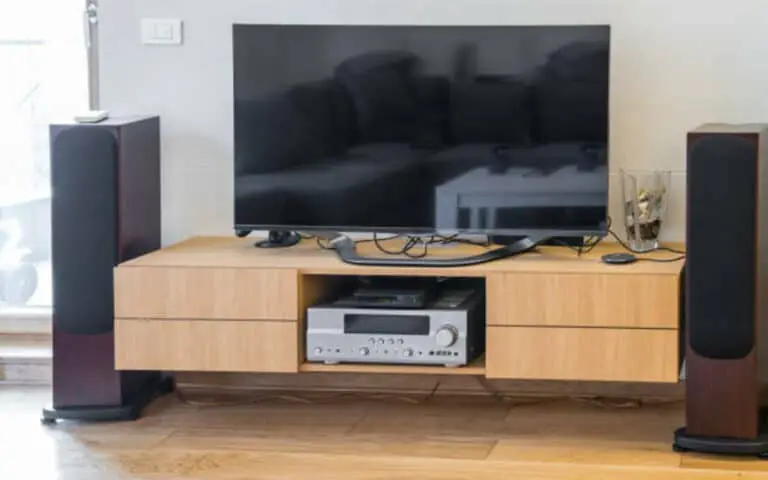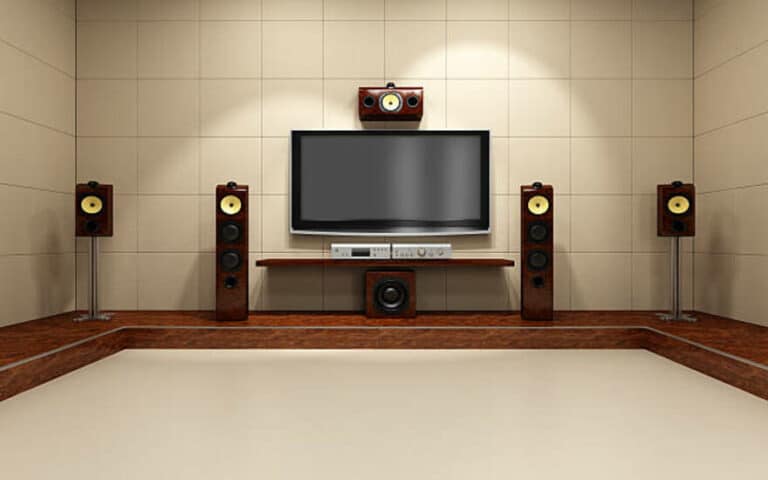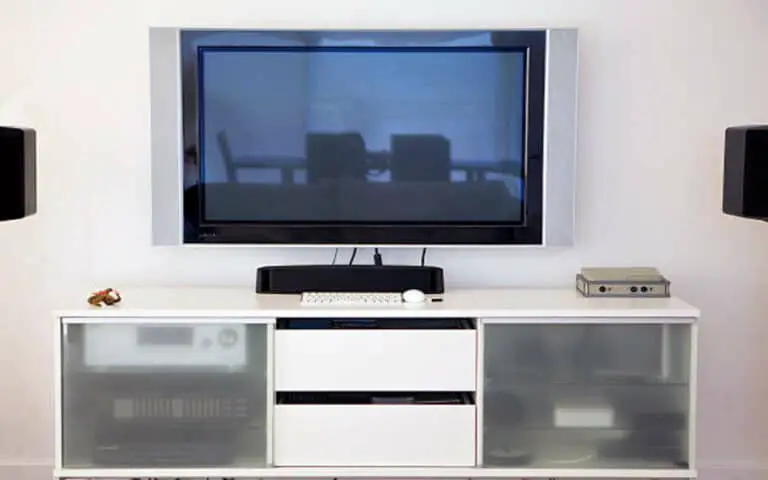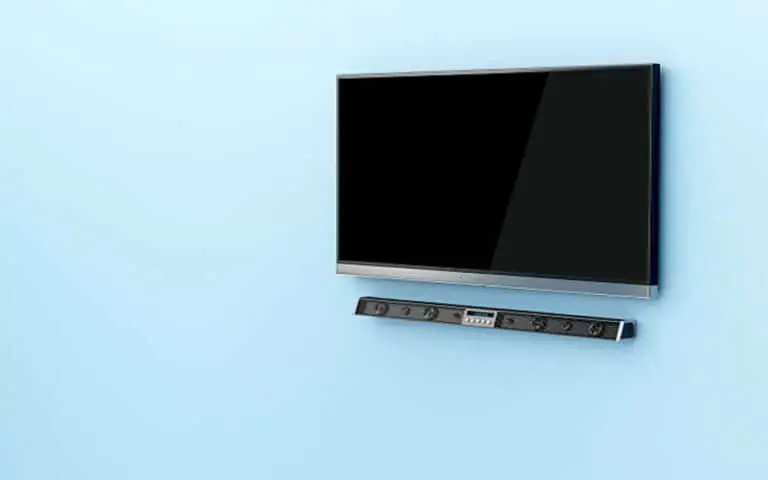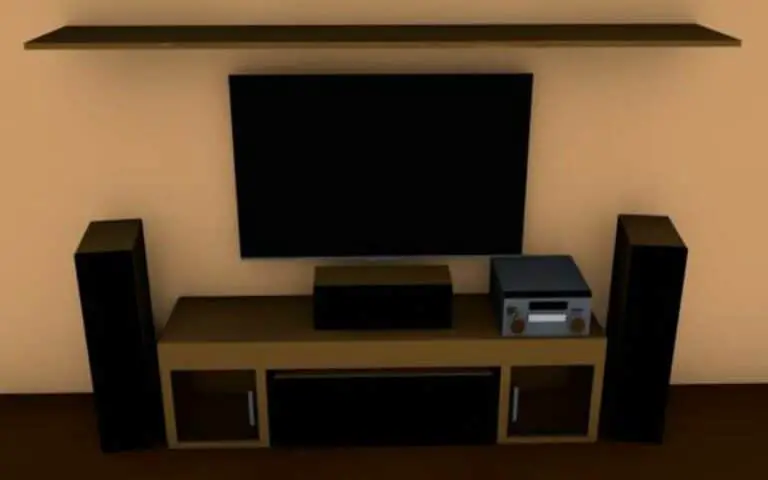If you’ve ever wondered if a soundbar can be mounted above your TV, then keep reading – I have all the answers you need.
Factors to consider when mounting a soundbar above a TV
When considering mounting a soundbar above your TV, —several factors must be considered first; the height of your TV matters. You want to avoid placing the soundbar too high or too low, as this can affect the audio quality.
Secondly, think about the distance between the soundbar and the TV. You don’t want them too far apart, which can also impact sound performance. Thirdly, check your soundbar’s compatibility with wall mounting. Fourthly, inspect your wall for studs to ensure a secure installation. Fifthly, make sure to manage the cables for a clean look properly.
Lastly, position the soundbar properly and be mindful of room acoustics. By following these factors, you can ensure a successful and enjoyable soundbar installation.

1. TV Height Matters
When mounting a soundbar above a TV, one crucial factor to consider is the height of the television. You want the soundbar to be mounted comfortably for your ears when sitting on the couch. If the TV is mounted too high, the soundbar must be higher, making it less effective.
Similarly, if the TV is mounted too low, the soundbar might block the screen, making it inconvenient for viewing. So, before mounting the soundbar, take the time to adjust the TV’s height and make sure it’s at a comfortable level for you. This will ensure that you get the optimal experience from your soundbar.
2. Consider the Distance Between the Soundbar and the TV
When mounting a soundbar above your TV, it’s essential to consider the distance between the two. Ideally, the soundbar should be mounted close to the TV to reach your ears clearly without delay or distortion.
If the soundbar is too far from the TV, you might experience an echo effect or muffled sound. On the other hand, if the soundbar is too close to the TV, it might obstruct your view or create an unbalanced look.
So, finding the sweet spot for your soundbar placement is critical. Don’t be afraid to experiment with different distances until you find the perfect balance between audio and visual aesthetics.
3. Check Your Soundbar’s Compatibility
When mounting a soundbar above your TV, it’s essential to check its compatibility with the TV and the mount. Ensure that the soundbar you’re considering is compatible with your TV in size and type of connection.
Some soundbars only work with certain TV brands, so check the compatibility before purchasing. Additionally, check that your soundbar will fit the bracket or wall mount you plan to use.
I did this before mounting my soundbar above my TV, and it gave me peace of mind knowing that everything was securely fastened and wouldn’t fall off. Trust me, you don’t want to risk damaging your expensive TV or soundbar!
4. Inspect Your Wall for Studs
Now that we’ve discussed the importance of TV height, distance, compatibility, cable management, and soundbar positioning, let’s discuss inspecting your wall for studs. This step is crucial when mounting a soundbar above your TV.
Studs are vertical wooden beams that support your wall and are necessary to provide stability and strength for your installation. Without studs, your soundbar could easily fall, causing damage to both your TV and soundbar.
Look for studs using a stud finder, and mark their location before installing your mount. If you’re unsure about finding studs or worried about damaging your wall, consider hiring a professional to help you with the installation.
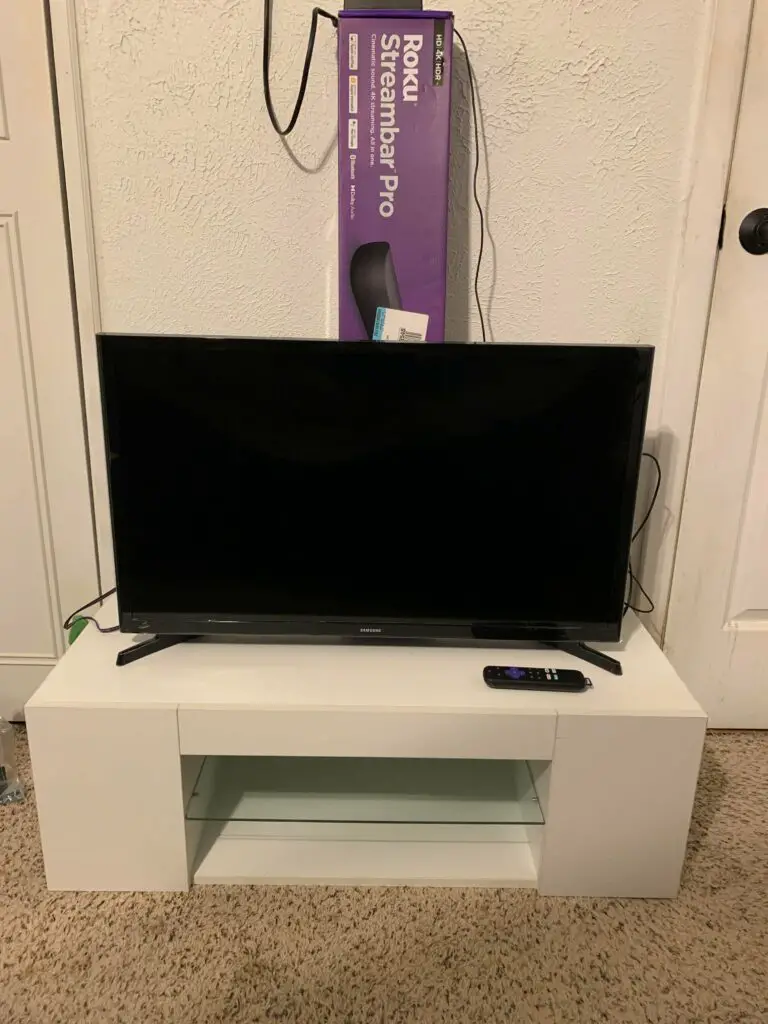
5. Ensure Proper Cable Management
When mounting a soundbar above your TV, it’s crucial to ensure proper cable management. This means hiding the cables running from your soundbar to your TV and outlet to keep your setup clean and organized.
You can use cable ties or adhesive clips to keep your cables secure and out of sight. In addition, make sure to measure the length of your lines to avoid any excess slack.
Proper cable management not only looks better, but it can also prevent any potential tripping hazards or damage to your equipment. Trust me, taking a few extra minutes to organize your cables will make a big difference in the overall look of your entertainment space.
6. Position the Soundbar Properly
When mounting a soundbar above a TV, positioning is critical. You want to ensure that the soundbar is at the right height and angle so that you and your guests can enjoy optimal audio quality.
As mentioned earlier, the most crucial factor is that the soundbar is at ear level. This means that an angled mount or swivel bracket may be necessary to position the device correctly. Also, gently angle the soundbar downwards towards your listening area.
Lastly, consider the size of your TV when positioning the soundbar – a smaller TV may require the soundbar to be placed closer to the screen.
7. Avoid Large or Heavy Soundbars
I think it’s essential to avoid large or heavy soundbars when mounting them above a TV. Not only can they be challenging to install correctly, but they can also be a safety hazard if they fall. Additionally, a massive soundbar may not be proportionate to the TV it’s mounted on, which can also be a cosmetic issue.
So, before purchasing a soundbar, check the specs and ensure it’s a suitable size and weight for your desired location. A slim, lightweight soundbar will make installation easier and integrate seamlessly with your overall home theatre setup.
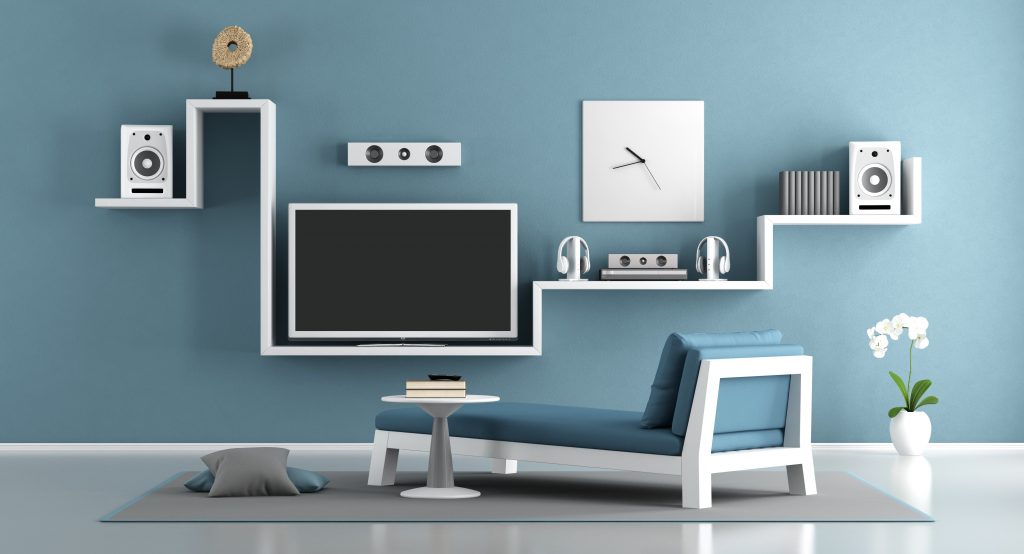
8. Be Mindful of Your Room Acoustics
Now that you’re considering mounting a soundbar above your TV, it’s essential to consider the room’s acoustics.
The sound quality of your soundbar will be impacted by the overall design of your space, including the size of the room, the placement of furniture, and the type of flooring.
Soft surfaces, like curtains or carpets, can help absorb sound and improve clarity, while hard surfaces, like walls or tile, can create echoes and distortions. It’s also worth considering whether you prefer a surround sound effect or a clear and centered audio experience.
Taking the time to evaluate your room’s acoustics can help you optimize the placement of your soundbar and create a listening experience that is both enjoyable and immersive.

9. Use a Level to Install Correctly
When mounting your soundbar above your TV, it’s essential to ensure it’s installed correctly. One crucial factor to consider is using a level during the installation process.
Using a level will help you ensure that your soundbar is straight and properly aligned with your TV. This is important for aesthetic purposes and ensuring sound is appropriately directed toward you.
Placing the soundbar at an angle can affect the sound quality, so using a level is critical to achieving optimal audio performance. So, take your time during the installation process and use a group to ensure that your soundbar is installed correctly and pointing towards your ears for the best audio experience.

10. Avoid Mounting on Hollow Walls
When mounting a soundbar above your TV, one crucial factor to consider is the type of wall you are mounting it on. It’s essential to avoid climbing on hollow walls, as they lack the support needed for the weight of the soundbar.
If you mount it on a hollow wall, your soundbar may not be stable, and it may eventually fall off, damaging your TV or injuring someone. It’s critical to ensure that the wall you mount the soundbar on has the necessary studs to support its weight.
This is why inspecting your wall for studs is essential when mounting a soundbar above your TV. Doing so will avoid any future accidents and ensure that your soundbar is securely mounted in place.
Can a soundbar be mounted on the wall above the TV?
Yes, soundbars can be mounted on the wall above the TV, but certain factors must be considered. First, you should consider the height of your TV and the distance between the soundbar and the TV. It’s essential to ensure that the soundbar is mounted at ear level for optimum sound quality.
Additionally, you should check your soundbar’s compatibility with your TV brand to avoid any connectivity issues. Inspecting the wall for studs and using a level to install the soundbar correctly is recommended.
You must also ensure that cable management is done correctly to avoid a disorganized setup. Finally, the weight and size of the soundbar must be considered to prevent a potential fall. Overall, mounting a soundbar on the wall above the TV is doable. Still, following the manufacturer’s instructions and taking the necessary precautions for a stable and safe setup is best.

Is it better to have the soundbar above or below the TV?
I believe that it’s better to have the soundbar below the TV. This is because it allows for a more precise audio experience, as the sound is projected toward you rather than upward toward the ceiling.
However, in some situations, such as when your soundbar has upward-firing speakers, mounting it above the TV could provide better audio quality.
It ultimately comes down to your specific soundbar and the room setup you’re working with. It’s essential to consider factors such as TV height, the distance between the soundbar and TV, compatibility, and proper positioning to determine your best setup.
Can a soundbar be used with any TV brand?
As a virtual assistant, I can confirm that almost all soundbars are compatible with any TV brand. Most soundbars use standard audio input and output connections available on all modern TVs.
However, it is always recommended to check the compatibility of the soundbar with your TV brand before purchasing.
Some high-end soundbars may require specific TV models with certain features, such as HDMI ARC or eARC, to enable advanced sound processing like Dolby Atmos. Therefore, it’s always best to research beforehand to ensure that your soundbar can be used with your TV brand without any issues.

How do I connect my soundbar to my TV if mounted above it?
When mounting your soundbar above your TV, it’s essential to ensure proper cable management to connect it to your television. Firstly, make sure that your soundbar and TV have the necessary ports for connectivity, such as HDMI or Optical ports.
After that, determine how you will run the cables without leaving a tangled mess. The best way to approach this is to use cable ties or tape to bundle the wires together neatly.
You can also consider using cable ducts to hide the wiring for a seamless look. Once the cables are connected, test the soundbar to ensure it’s working correctly in conjunction with your mounted TV setup.


